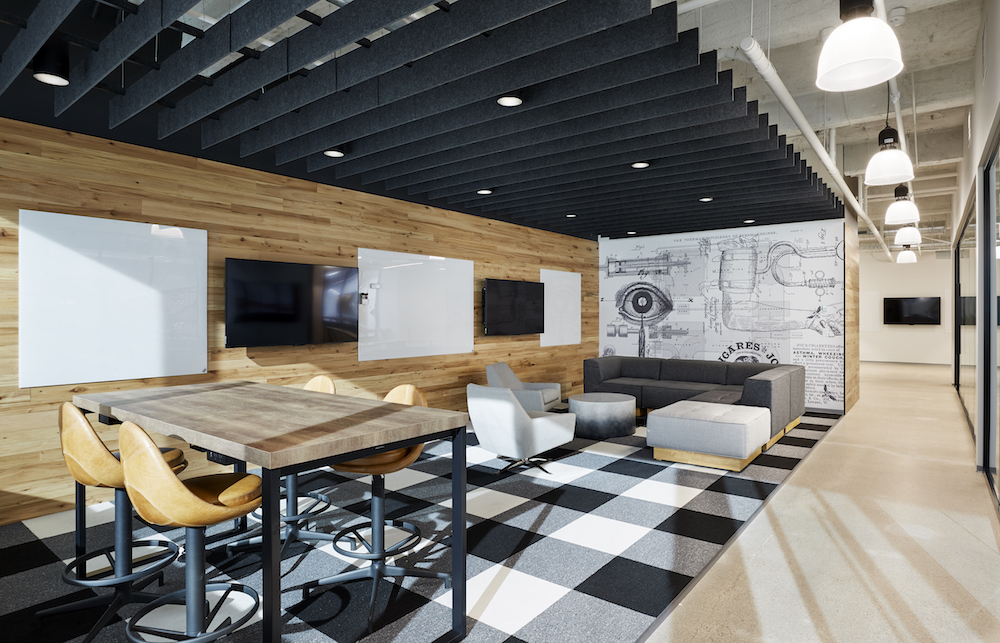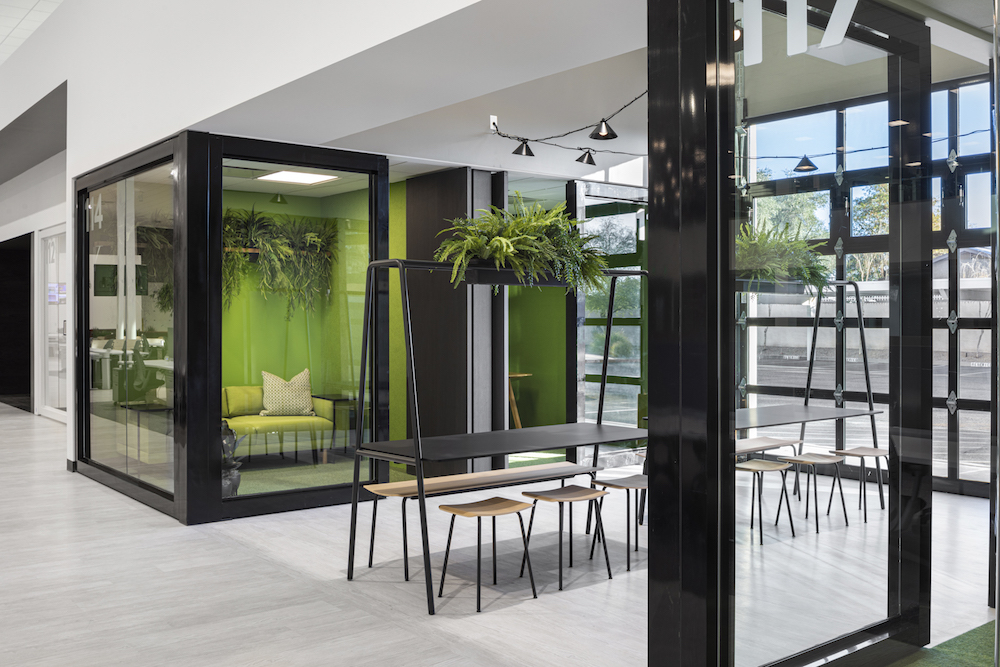As companies start moving away from dedicated assigned work environments to a distributed workforce, Liana Jameson takes a fresh look at what that means for personalization in the office.

In response to the remote work revolution, businesses have quickly pivoted their policies and technology to support their employees. With encouraging reports of COVID-19 vaccination rates and increasing confidence that returning to the office safely is attainable, we are seeing another major shift—a total re-evaluation of the idea of place, space and what they mean for the work environment and the employee experience.
With as many as 20-30 percent of workers continuing to work from home at least a few days a week, the idea that every employee should have their own dedicated workspace is neither practical nor cost-effective. Truthfully, this shift from dedicated workspace to a mobile or distributed workforce has been part of the corporate real estate landscape for more than a decade, but it has been slow to gain momentum, often due to employee concerns about losing their personal space. With this new, increased interest and higher tolerance for the distributed workforce and unassigned work environments post-COVID, people still want the office to feel personal and like they belong. It comes down to a new way of thinking about personalization in the office.

A New Look at the Personalized Office
Our new norm of “work from anywhere” is better described as “I want the choice to work in an environment where I can be most productive and at my best.” It’s about creating a unique human experience in the workplace. For many years, that meant a dedicated workstation or office with family photos, personal touches, and allowing employees to make their spaces feel comfortable.
Research suggests when we own more of our time, we feel like we’re in charge of our lives and our schedules, which makes us happier and, ultimately, better at what we do. Our health and happiness also tends to increase over the course of our lifetimes and, with it, our value to the workplace and to society as a whole.
As companies show an increased interest in distributed workforce models, we are exploring design solutions that enhance employee experience, sense of place and personalization in a few different ways.
1. Data makes office design better for everyone
We’re using data to shape the best possible spaces for entire companies, specific teams and even individuals. If we find that, for example, a team is spending 60% of their time away from their desks collaborating with others or in meetings or three days a week working from home, then we prioritize conference and group space over individual workstations. Increasing the variety of workspaces yields higher user choice. A greater number of unique environments in an office landscape allow for people to “see themselves” through providing space that supports the way they want to work. Data can also inform the types of interactive elements we implement.

2. Paradigm shift from “Me Space” to “We Space”
Personal space is often closely correlated to an employee’s ability to personalize that space. As companies shift to a distributed workforce being more of the norm, employees need to shift their thinking from identifying with “Me Space” to identifying with a neighborhood, zone, area, or community. That’s what we think of as “We Space.”
3. Good design fosters community
It’s still possible to make people feel at home, even without individual, dedicated workstations. Teams are assigned to certain areas or “neighborhoods” that support the work they do. One team may need erasable surface walls. Another may need an extra focus room. And yet another may need a library or extra collaboration space. The layout is tailored to the team. Then we add in interactive elements that help reinforce a sense of belonging, through photo collage walls, extracurricular activity bulletin boards, or even LEGO walls to leave a personal mark.
4. Everything is accessible
As part of a team’s designated neighborhood, we make sure whatever they need is easily accessible, from restrooms to printers to larger conference rooms. At the same time, we avoid team isolation by making sure destination spaces, like cafes and kitchens, are available on every floor to still encourage networking and collaboration between teams. Clients tell us repeatedly how the two-minute impromptu meetings on the way to the printer can often be the most effective.

5. Take EDI seriously
Providing different areas for different types of work, like quiet areas or focus rooms, is nothing new. In fact, it’s an integral part of any modern office design. What we’re seeing now is something different. We are seeing clients deliberately and thoughtfully integrate different types of spaces for neurodiverse employees as part of their Equity, Diversity and Inclusion initiatives. In this case, EDI means honoring different work styles and needs, offering employees a choice of dynamic spaces and calming areas so that everyone can be their most productive and happy when they’re in the office. We will likely see more of this in the coming years, as the youngest generation of workers comes to the office with acutely attuned strategies and ideas that help them be effective, engaged employees.
6. Making untethered office technology the norm
Ideally, it should be seamless to switch between working from the office and working from anywhere. Within the office, untethered tech allows employees to switch between environments for different types of work. And when it’s time to work from home, they can grab their laptop and phone and be just as productive. This of course drives a more robust tech infrastructure and a Smart Building sensibility, but more on that in a future article.
7. Modular planning strategies make workplaces hyper-scalable and resilient
Our clients need their offices to be flexible enough to adapt to business needs. We do that by implementing universally planned modules of space with furniture from a kit of parts that can support an array of work types, paired with consistent infrastructure. These Modular Open Offices can switch from mostly workstations/cubicles to open collaboration spaces with universal electrical. Our workplace strategy playbooks are tailored to each individual client, so their spaces can ebb and flow as business needs change, and it allows companies to engage in long-term, cost-effective planning of their office spaces.

The Future of Office Personalization
The last year has taught us that we all have a larger bandwidth than we previously thought to pivot and work differently. We are seeing a renewed appetite for re-evaluating what workers really need to get their jobs done well. When it comes to making people feel their best in the office, personalization, customization and design really comes down to helping people feel tied to a culture and a purpose, without being tied to a desk.

